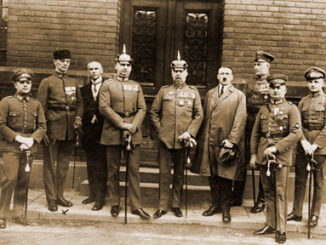
The Komagata Maru incident involved the Japanese steamship Komagata Maru, on which a group of people from British India attempted to immigrate to Canada in April 1914, but most were denied entry and forced to return to Calcutta, where at least 19 people were killed in a clash with British soldiers. IN 2017, the Akal Takht, the highest temporal seat of the Sikhs, accorded the status of martyrs upon those killed in Komagata Maru tragedy.
On May 20, 2016, Canadian Prime Minister Justin Trudeau rendered an apology in Parliament, saying ‘More than a century ago, a great injustice took place.’ This was one of the rare occasions when a sitting public ofcial apologised publicly for a controversial historic event. What he wasapologising for was the SS Komagata Maru incident of 1914, when aship laden with Indian immigrants was refused entry at the Canadian ports.
It was a time when Canada’s immigration policies were an actively racialised endeavour. The objective of the Canadian government was to attract more British and American immigrants, as well as immigrants from the ‘preferred countries’ of central and northern Europe. This strict hierarchy continued till the Second World War, with a more inclusive policy only being adopted in the 1960s.
Suffice it to say, Indians and other ‘Asians’ were on the bottom deck, actively kept out due to Western paranoia about them coming and taking up local jobs and introducing their ‘ways of life.’
As per the Canadian government’s 1908 Continuous Passage Act, all potential immigrants had to make a continuous journey to Canada, with no stops. A later amendment stated that no immigrant of ‘Asiatic’ origin would be permitted unless they were in possession of $200, a signicant sum even today.
Canada at the time was actually seeing a period of increased migration from Europe, with its more direct routes. A journey from law. This was, therefore, just another case of ‘smart discrimination,’ part of a concerted Asian-exclusion policy by the Canadian Government, to keep the ‘unwanted’ out.
Matters came to a head with the Komagata Maru incident.
The story begins in 1913. Gurdit Singh was a well-to-do Sikh contractor from Amritsar, who had also lived variously in south-east Asia. During a visit to Hong Kong in 1913, he came across a large contingent of Sikhs who were looking to immigrate to the United States or Canada.
The ship set sail from Hong Kong on April 4, 1914, with 165 passengers, and more joining in Shanghai and Yokohama. It left Yokohama on May 3 with 376 passengers and sailed into Burrard Inlet, near Vancouver, on May 23. The Canadian authorities, however, citing the policy, refused permission to dock and the passengers were detained on board. A two-month stalemate followed, with negotiations, political manoeuvring and talks taking place. Conditions aboard were abysmal for the passengers, with a shortage of food and water.
‘Shore’ committees were formed to help the passengers with provisions, both food and legal, by Indians in Vancouver. Protest meetings were also held in the city. But on July 23, the ship was forced to turn back, with only 20 people satisfying the authorities to
stay back and the rest having their dreams shattered.
The ship’s departure, however, was just the beginning of the saga though—the passengers faced the iron st of the British authorities, to much more violent ends, on the return voyage.
It was the time when the revolutionary Ghadar movement was sweeping across the Indian diaspora in the USA and Canada. Theleaders planned to return to India and foment a revolution. Clarion calls were sounded across Indian student societies across the Pacic Coast, including California and Oregon, urging Indians to ‘go home’.
The British were not in the dark about what was brewing. They were ell-prepared for it, and the passengers of the Komagata Maru had to bear the brunt of the response. They even passed an ordinance restricting the liberties of any Indian returning to the country after September 5, 1914, and the ship’s passengers were one of the first to be charged. The SS Komagata Maru arrived at the Budge Budge dock in Calcutta on September 27, only to be welcomed by British gunboats at the entry into the port. The passengers were charged as political agitators who had acted illegally. A riot ensued, as the police stepped in to capture Gurdit Singh and other leaders. In the ruckus, 19 passengers were shot and killed, the rest were incarcerated or kept under house arrest until WWI ended. Gurdit Singh escaped, but eventually gave himself up and served a ve-year term.
Komagata Maru was an incident that not only shaped Indian immigration but galvanised Indian nationalism, particularly with the Ghadar movement. The confrontation became a rallying point in a diasporic movement for social justice and a springboard for an international, anti-colonial sentiment.
In 1952, the Indian government erected a monument to the martyrs of Komagata Maru at Budge Budge. September 29 is marked as memorial day when Sikhs visit Budge Budge to pay homage.
While remembered as a dark phase in Canadian history, the story still remains largely forgotten in India.
Source: Live History India





Be the first to comment